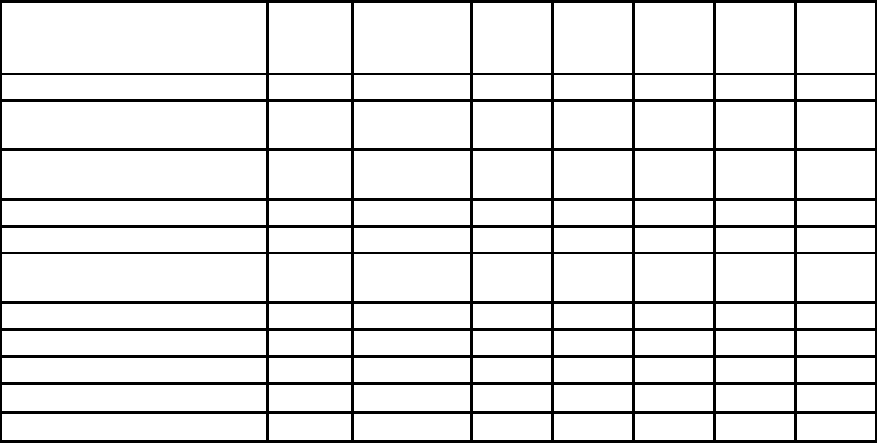Damodaran A. Applied corporate finance
Подождите немного. Документ загружается.


31
31
These actions will lower the value of the firm. Another possibility is that the management
may decide to use the cash to finance an acquisition. This hurts stockholders in the firm
because some of their wealth is transferred to the stockholders of the acquired firms. The
managers will claim that such acquisitions have strategic and synergistic benefits. The
evidence
9
indicates, however, that most firms that have financed takeovers with large
cash balances, acquired over years of paying low dividends while generating high free
cash flows to equity, have reduced stockholder value.
Stockholder Reaction
Because of the negative consequences of building large cash balances,
stockholders of firms that pay insufficient dividends and do not have “good” projects
pressure managers to return more of the cash back to them. This is the basis for the free
cash flow hypothesis, where dividends serve to reduce free cash flows available to
managers and, by doing so, reduce the losses management actions can create for
stockholders.
Management’s Defense
Not surprisingly, managers of firms that pay out less in dividends than they can
afford view this policy as being in the best long-term interests of the firm. They maintain
that while the current project returns may be poor, future projects will both be more
plentiful and have higher returns. Such arguments may be believable initially, but they
become more difficult to sustain if the firm continues to earn poor returns on its projects.
Managers may also claim that the cash accumulation is needed to meet demands arising
from future contingencies. For instance, cyclical firms will often state that large cash
balances are needed to tide them over the next recession. Again, while there is some truth
to this view, the reasonableness of the cash balance must be compared to the experience
of the firm in terms of cash requirements in prior recessions.
Finally, in some cases, managers will justify a firm’s cash accumulation and low
dividend payout based upon the behavior of comparable firms. Thus, a firm may claim
that it is essentially matching the dividend policy of its closest competitors and that it has
9
See chapter 26.
32
32
to continue to do so to remain competitive. The argument that “every one else does it”
cannot be used to justify a bad dividend policy, however.
Although all these justifications seem consistent with stockholder wealth
maximization or the best long-term interests of the firm, they may really be smoke
screens designed to hide the fact that this dividend policy serves managerial rather than
stockholder interests. Maintaining large cash balances and low dividends provides
managers with two advantages: it increases the funds that are directly under their control
and thus increases their power to direct future investments; and it increases their margin
for safety stabilizing earnings and protecting their jobs.
B. Good Projects and Low Payout
While the outcomes for stockholders in firms with poor projects and low dividend
payout ratios range from neutral to terrible, the results may be more positive for firms
that have a better selection of projects, and whose management have had a history of
earning high returns for stockholders.
Consequences of Low Payout
The immediate consequence of paying out less in dividends than is available in
free cash flow to equity is the same for firms with good projects as it is for firms with
poor projects: the cash balance of the firm increases to reflect the cash surplus. The long
term effects of cash accumulation are generally much less negative for these firms,
however, for the following reasons:
• These firms have projects that earn returns greater than the hurdle rate, and it likely
that the cash will be used productively in the long term.
• The high returns earned on internal projects reduces both the pressure and the
incentive to invest the cash in poor projects or in acquisitions.
• Firms that earn high returns on their projects are much less likely to be targets of
takeovers, reducing the threat of hostile acquisitions.
To summarize, firms that have a history of investing in good projects and that expect to
continue to have such projects in the future may be able to sustain a policy of retaining
cash rather than paying out dividends. In fact, they can actually create value in the long
term by using this cash productively.
33
33
Stockholders Reaction
Stockholders are much less likely to feel a threat to their wealth in firms that have
historically shown good judgment in picking projects. Consequently, they are more likely
to agree when managers in those firms withhold cash rather than pay it out. While there is
a solid basis for arguing that managers cannot be trusted with large cash balances, this
proposition does not apply equally across all firms. The managers of some firms earn the
trust of their stockholders because of their capacity to deliver extraordinary returns on
both their projects and their stock over long periods of time. These managers will be
generally have much more flexibility in determining dividend policy.
The notion that greedy stockholders force firms with great investments to return
too much cash too quickly is not based in fact. Rather, stockholder pressure for dividends
or stock repurchases is greatest in firms whose projects yield marginal or poor returns,
and least in firms whose projects have high returns.
Management Responses
Managers in firms that have posted stellar records in project and stock returns
clearly have a much easier time convincing stockholders of the desirability of
withholding cash rather than paying it out. The most convincing argument for retaining
funds for reinvestment is that the cash will be used productively in the future and earn
excess returns for the stockholders. Not all stockholders will agree with this view,
especially if they feel that future projects will be less attractive than past projects, as may
occur if the industry in which the firm operates is maturing. For example, many specialty
retail firms, such as the Limited, found themselves under pressure to return more cash to
stockholders in the early 1990s as margins and growth rates in the business declined.
C. Poor Projects and High Payout
In many ways, the most troublesome combination of circumstances occurs when
firms pay out much more in dividends than they can afford, and at the same time earn
disappointing returns on their projects. These firms have problems with both their
investment and their dividend policies, and the latter cannot be solved adequately without
addressing the former.
34
34
Consequences of High Payout
When a firm pays out more in dividends than it has available in free cash flows to
equity, it is creating a cash deficit that has to be funded by drawing on the firm’s cash
balance, by issuing stock to cover the shortfall, or by borrowing money to fund its
dividends. If the firm uses its cash reserves, it will reduce equity and raise its debt ratio. If
it issues new equity, the drawback is the issuance cost of the stock. By borrowing money,
the firm increases its debt, while reducing equity and increasing its debt ratio.
Since the free cash flows to equity are after capital expenditures, this firm’s real
problem is not that it pays out too much in dividends, but that it invests too heavily in bad
projects. Cutting back on these projects would therefore increase the free cash flow to
equity and might eliminate the cash shortfall created by paying dividends.
Stockholder Reaction
The stockholders of a firm that pays more in dividends than it has available in free
cash flow to equity faces a dilemma: On the one hand, they may want the firm to reduce
its dividends to eliminate the need for additional borrowing or equity issues each year.
On the other hand, the management’s record in picking projects does not evoke much
trust that the firm is using funds wisely, and it is likely that the funds saved by not paying
the dividends will be used on other poor projects. Consequently, these firms will first
have to solve their investment problems and then cut back on poor projects, which, in
turn, will increase the free cash flow to equity. If the cash shortfall persists, the firm
should then cut back on dividends.
It is therefore entirely possible, especially if the firm is underleveraged to begin
with, that the stockholders will not push for lower dividends but will try to convince
managers to improve project choice instead. It is also possible that they will encourage
the firm to eliminate enough poor projects so that the free cash flow to equity covers the
expected dividend payment.
Management Responses
The managers of firms with poor projects and dividends that exceed free cash
flows to equity may not think that they have investment problems rather than dividend
problems. They may also disagree that the most efficient way of dealing with these
problems is to eliminate some of the capital expenditures. In general, their views will be

35
35
the same as managers who have a poor investment track record. They will claim the
period used to analyze project returns was not representative, it was an industry-wide
problem that will pass, or the projects have long gestation periods.
Overall, it is unlikely that these managers will convince the stockholders of their
good intentions on future projects. Consequently, there will be a strong push towards
cutbacks in capital expenditures, especially if the firm is borrowing money to finance the
dividends and does not have much excess debt capacity.
11.5. ☞: Stockholder Pressure and Dividend Policy
Which of the following companies would you expect to see under greatest pressure from
its stockholders to buy back stock or pay large dividends? (All of the companies have
costs of capital of 12%.)
a. A company with a historical return on capital of 25%, and a small cash balance
b. A company with a historical return on capital of 6%, and a small cash balance
c. A company with a historical return on capital of 25%, and a large cash balance
d. A company with a historical return on capital of 6%, and a large cash balance
The managers at the company argue that they need the cash to do acquisitions. Would
this make it more or less likely that stockholders will push for stock buybacks?
a. More likely
b. Less likely
D. Good Projects and High Payout
The costs of trying to maintain unsustainable dividends are most evident in firms
that have a selection of good projects to choose from. The cash that is paid out as
dividends could well have been used to invest in some of these projects, leading to a
much higher return for stockholders and higher stock prices for the firm.
Consequences of High Payout
When a firm pays out more in dividends than it has available in free cash flow to
equity, it is creating a cash shortfall. If this firm also has good projects available but
cannot invest in them because of capital rationing constraints, the firm is paying a hefty
price for its dividend policy. Even if the projects are passed up for other reasons, the cash

36
36
this firm is paying out as dividends would earn much better returns if left to accumulate
in the firm.
Dividend payments also create a cash deficit that now has to be met by issuing
new securities. Issuing new stock carries a potentially large issuance cost, which reduces
firm value. But, if the firm issues new debt, it might become overleveraged, and this may
reduce value.
Stockholder Reaction
The best course of action for stockholders is to insist that the firm pay out less in
dividends and invest in better projects. If the firm has paid high dividends for an extended
period of time and has acquired stockholders who value high dividends even more than
they value the firm’s long-term health, reducing dividends may be difficult. Even so,
stockholders may be much more amenable to cutting dividends and reinvesting in the
firm, if the firm has a ready supply of good projects at hand.
Management Responses
The managers of firms that have good projects, while paying out too much in
dividends, have to figure out a way to cut dividends, while differentiating themselves
from those firms that are cutting dividends due to declining earnings. The initial
suspicion with which markets view dividend cuts can be overcome, at least partially, by
providing markets with information about project quality at the time of the dividend cut.
If the dividends have been paid for a long time, however, the firm may have stockholders
who like the high dividends and may not particularly be interested in the projects that the
firm has available. If this is the case, the initial reaction to the dividend cut, no matter
how carefully packaged, will be negative. However, as disgruntled stockholders sell their
holdings, the firm will acquire new stockholders who may be more willing to accept the
lower dividend and higher investment policy.
11.6. ☞: Dividend Policy and High Growth Firms
High growth firms are often encouraged to start paying dividends to expand their
stockholder base, since there are stockholders who will not or cannot hold stock that do
not pay dividends. Do you agree with this rationale?
a. Yes

37
37
b. No
Explain.
Step 4: Interaction between Dividend Policy and Financing Policy
The analysis of dividend policy is further enriched –– and complicated –– if we
bring in the firm’s financing decisions as well. In Chapter 9, we noted that one of the
ways a firm can increase leverage over time is by increasing dividends or repurchasing
stock; at the same time, it can decrease leverage by cutting or not paying dividends. Thus,
we cannot decide how much a firm should pay in dividends without determining whether
it is under- or over-levered and whether or not it intends to close this leverage gap.
An underlevered firm may be able to pay more than its FCFE as dividend and
may do so intentionally to increase its debt ratio. An overlevered firm, on the other hand,
may have to pay less than its FCFE as dividends, because of its desire to reduce leverage.
In some of the scenarios described above, leverage can be used to strengthen the
suggested recommendations. For instance, an under-levered firm with poor projects and a
cash flow surplus has an added incentive to raise dividends and to reevaluate investment
policy, since it will be able to increase its leverage by doing so. In some cases, however,
the imperatives of moving to an optimal debt ratio may act as a barrier to carrying out
changes in dividend policy. Thus, an over-levered firm with poor projects and a cash flow
surplus may find the cash better spent reducing debt rather than paying out dividends.
Illustration 11.5: Analyzing the Dividend Policy of Disney and Aracruz
Using the cash flow approach, described above, we are now in a position to
analyze Disney’s dividend policy. To do so, we will draw on three findings:
• Earlier, we compared the cash returned to stockholders by Disney between 1994 and
2003 to its free cash flows to equity. On average, Disney paid out 38.83% of its free
cash flow to equity as dividends. In recent years, though, Disney has had significant
operating problems, and its net income reflects these troubles.
• We then compared Disney’s return on equity and stock to the required rate of return,
and found that the company had under performed on both measures.
• Finally, in our analysis in chapter 8, we noted that Disney was slightly under levered,
with an actual debt ratio of 21% and an optimal debt ratio of 30%.

38
38
Given its recent operating problems, we would recommend that Disney maintain its
existing dividend payments for the next year. If the higher earnings that the company has
reported in recent quarters are sustained, the free cash flows to equity will be higher than
the dividend payments, In table 11.10, we forecast the free cashflows to equity for Disney
over the next 5 years and compare it to existing dividend payments:
Table 11.10: Forecasted FCFE and Cash Available for Stock Buybacks: Disney
Current
Expected
Growth
Rate
1
2
3
4
5
Net Income
$1,267
6.00%
$1,343
$1,424
$1,509
$1,600
$1,696
- (Cap Ex -
Deprec'n) (1 -
DR)
($20)
$9
$41
$79
$123
$174
- Change in
Working Capital
(1 - DR)
($185)
$22
$23
$24
$26
$28
FCFE
$1,471
$1,313
$1,359
$1,405
$1,450
$1,494
Expected
Dividends
$429
0.00%
$429
$429
$429
$429
$429
Cash available
for stock
buybacks
$1,042
$884
$930
$976
$1,021
$1,065
Revenues
$27,061
6.00%
$28,685
$30,406
$32,230
$34,164
$36,214
Non-cash WC
$519
$31
$33
$35
$37
$39
Capital
Expenditures
$1,049
10.00%
$1,154
$1,269
$1,396
$1,536
$1,689
Depreciation
$1,077
6.00%
$1,142
$1,210
$1,283
$1,360
$1,441
Note that we have assumed that revenues, net income and depreciation are expected to
grow 6% a year for the next 5 years and that working capital remains at its existing
percentage (1.92%) of revenues. We have also assumed that capital expenditures will
grow faster (10%) over the next 5 years to compensate for reduced investment in prior
years. Finally, we assumed that 30% of the net capital expenditures and working capital
changes would be funded with debt, reflecting the optimal debt ratio we computed for
Disney in chapter 8. Based upon these forecasts, and assuming that Disney maintains its
existing dividend, Disney should have about $4.876 million in excess cash that it can
return to its stockholders either as dividends or in the form of stock buybacks over the
period.

39
39
Examining Aracruz, we find that the firm is paying out more in dividends than it
has available in free cashflows to equity. If you couple this finding with large investment
needs, potentially good project returns and superior stock price performance, is seems
clear that Aracruz will gain by cutting its dividends. In fact, this conclusion is
strengthened when we forecast the free cashflows to equity for the next 5 years and
compare them to the dividends being paid in Table 11.11;
Table 11.11: Expected FCFE and Cash Available for Dividends
Current
Expected
Growth
Rate
1
2
3
4
5
Net Income
$148
5.00%
$155
$163
$171
$180
$189
- (Cap Ex - Deprec'n) (1 -
DR)
$176
$120
$126
$133
$139
$146
- Change in Working Capital
(1 - DR)
($5)
$5
$5
$6
$6
$6
FCFE
($23)
$30
$32
$33
$35
$37
Expected Dividends
$109
0.00%
$109
$109
$109
$109
$109
Cash available for stock
buybacks
($79)
($78)
($76)
($74)
($73)
Revenues
Non-cash WC
$1,003
5.00%
$1,053
$1,106
$1,161
$1,219
$1,280
Capital Expenditures
$150
$8
$8
$8
$9
$9
Depreciation
$421
5.00%
$347
$365
$383
$402
$422
In making these estimates, we assumed that revenues, net income, capital expenditures
and depreciation will all grow 5% a year for the next 5 years and the non-cash working
capital will remain at 15% of revenues. For capital expenditures, which have been
volatile over the last few years, we used the average amount from 2000-03 as the base
year number. If Aracruz maintains its existing dividends, the firm will find itself facing
cash deficits in each of the next 5 years, aggregating to about $381 million. While the
case for cutting dividends is strong, Aracruz has a potential problem because of its share
structure, where the “preferred shares” held by outside investors get no voting rights but
are compensated for with a larger dividend. Cutting dividends may violate the
commitments given to preferred stockholders and trigger at least a partial loss of control.
While there is no easy solution, it highlights a cost of trading off dividends for control.

40
40
How much did the firm pay out? How much could it have afforded to pay out?
What it could have paid out What it actually paid out
Net Income Dividends
- (Cap Ex - Depr’n) (1-DR) + Equity Repurchase
- Chg Working Capital (1-DR)
= FCFE
Firm pays out too little
FCFE > Dividends
Firm pays out too much
FCFE < Dividends
Do you trust managers in the company with
your cash?
Look at past project choice:
Compare ROE to Cost of Equity
ROC to WACC
What investment opportunities does the
firm have?
Look at past project choice:
Compare ROE to Cost of Equity
ROC to WACC
Firm has history of
good project choice
and good projects in
the future
Firm has history
of poor project
choice
Firm has good
projects
Firm has poor
projects
Give managers the
flexibility to keep
cash and set
dividends
Force managers to
justify holding cash
or return cash to
stockholders
Firm should
cut dividends
and reinvest
more
Firm should deal
with its investment
problem first and
then cut dividends
Figure 11.4: A Framework for Analyzing Dividend Policy
